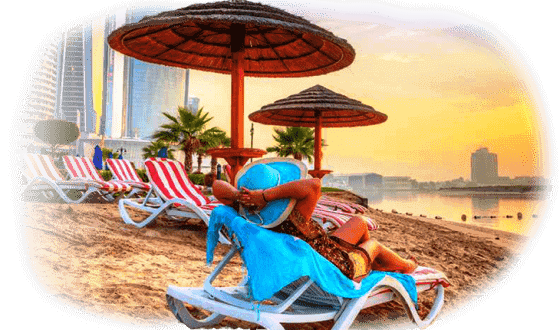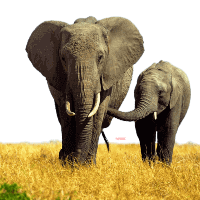Plan your Kenyan Tour and Trip Comfortably - Best Advice

Preparing for a safari trip to Kenya means weighing a lot of factors that might take a lot of your time. Why not talk to a resourceful local consultant like Homejoy Safari Adventures & get set up smoothly for your Kenya Safari tour?



Ensure to Make new discoveries and learn new things
The Best Places for Wildlife Photography in Kenya
, Narok County
Kenya
Kenya is a dream destination for wildlife photographers, offering unparalleled opportunities to capture stunning images of the diverse fauna and landscapes. Whether you are a seasoned professional or an enthusiastic beginner, Kenya’s wide range of ecosystems presents breathtaking photography opportunities that are hard to match anywhere else in the world. From the sweeping plains of the Maasai Mara to the picturesque backdrops of Mount Kilimanjaro in Amboseli, the country’s national parks and reserves provide diverse scenery that elevates wildlife photography to an entirely new level. Every location presents a unique environment that can be explored and appreciated through the lens, allowing photographers to capture rare and dynamic wildlife interactions. The combination of abundant wildlife, dramatic landscapes, and golden lighting conditions makes Kenya one of the best places in the world for nature photography. Whether it’s a lion pride basking in the early morning light, a herd of elephants silhouetted against the setting sun, or a spectacular migration scene, the visual possibilities are endless. The diversity in wildlife and geography ensures that every photographer, regardless of skill level, finds inspiration in Kenya’s natural beauty. Kenya’s rich biodiversity encompasses savannahs, wetlands, forests, and deserts, offering photographers a variety of subjects to work with. From the Big Five, lions, elephants, leopards, buffaloes, and rhinos, to the more elusive and rare species such as the Grevy’s zebra, reticulated giraffe, and African wild dogs, each setting offers new photographic challenges and rewards. The natural diversity ensures that every shot tells a different story, capturing Kenya’s wildlife in all its majesty. Capturing these animals in their natural habitat requires patience, skill, and knowledge of the best locations and times to shoot. Photographers visiting Kenya should consider the season when planning their trips, as different times of the year provide varying photographic opportunities. Understanding seasonal patterns and animal behaviors helps photographers strategize the best moments for capturing the most compelling wildlife images. The dry season (June to October) is ideal for wildlife photography because animals gather around water sources, making them easier to spot. A telephoto lens (200mm-600mm) is essential for capturing distant subjects, while a wide-angle lens is useful for scenic shots that showcase the environment. Understanding animal behavior and practicing ethical wildlife photography, minimizing disturbances and respecting the animals’ space, ensures that photographers can document Kenya’s wildlife responsibly. Beyond national parks, Kenya’s private conservancies provide a more intimate and exclusive photography experience with fewer crowds and better-controlled environments. These conservancies often offer night safaris liike the nighttime cheetah spotting in Ol Pejeta Conservancy and off-road access, allowing photographers to capture unique moments that may not be possible in the busier national parks. With experienced guides and carefully managed ecosystems, conservancies provide unparalleled access to some of the most extraordinary wildlife encounters. Guided photography safaris, such as those provided by Homejoy Safari Adventures, help photographers access prime locations and increase their chances of capturing rare moments in the wild.
Do I need special permits for wildlife photography in Kenya?
 For casual wildlife photography in Kenya, a standard national park entry permit is usually sufficient. However, if you plan to use professional equipment for commercial purposes, additional permits may be required. The Kenya Wildlife Service (KWS) oversees all national parks and reserves and issues special licenses for commercial filming and drone usage. If you are a professional photographer working on a documentary, commercial project, or promotional content, you must apply for a filming permit from KWS. This process includes detailing the nature of your work, the locations you plan to visit, and the type of equipment you will use. Fees vary depending on the duration of the project and the areas covered. Certain locations, such as Maasai Mara, may have additional county-level regulations, so it is advisable to check with local authorities before filming. Drone photography, while growing in popularity, is heavily regulated in Kenya. To use a drone legally, photographers must obtain approval from the Kenya Civil Aviation Authority (KCAA) and KWS. The process involves licensing the drone, securing an operator permit, and ensuring compliance with national aviation laws. Unauthorized drone usage in national parks can lead to fines and confiscation of equipment. Since drones can disturb wildlife, especially birds and large mammals, their use is typically restricted to research and special projects with conservation approval. Additionally, photographers planning night safaris or off-road access for photography should verify specific park regulations. Some parks allow limited night photography under strict guidelines, while others prohibit it entirely to protect nocturnal wildlife. Special access permits can be arranged through registered tour operators who coordinate with park authorities. To avoid any legal issues, photographers should always confirm requirements with KWS before their trip. Consulting with reputable tour operators ensures that all necessary permits are secured in advance, allowing photographers to focus on capturing Kenya’s breathtaking wildlife without regulatory concerns.
For casual wildlife photography in Kenya, a standard national park entry permit is usually sufficient. However, if you plan to use professional equipment for commercial purposes, additional permits may be required. The Kenya Wildlife Service (KWS) oversees all national parks and reserves and issues special licenses for commercial filming and drone usage. If you are a professional photographer working on a documentary, commercial project, or promotional content, you must apply for a filming permit from KWS. This process includes detailing the nature of your work, the locations you plan to visit, and the type of equipment you will use. Fees vary depending on the duration of the project and the areas covered. Certain locations, such as Maasai Mara, may have additional county-level regulations, so it is advisable to check with local authorities before filming. Drone photography, while growing in popularity, is heavily regulated in Kenya. To use a drone legally, photographers must obtain approval from the Kenya Civil Aviation Authority (KCAA) and KWS. The process involves licensing the drone, securing an operator permit, and ensuring compliance with national aviation laws. Unauthorized drone usage in national parks can lead to fines and confiscation of equipment. Since drones can disturb wildlife, especially birds and large mammals, their use is typically restricted to research and special projects with conservation approval. Additionally, photographers planning night safaris or off-road access for photography should verify specific park regulations. Some parks allow limited night photography under strict guidelines, while others prohibit it entirely to protect nocturnal wildlife. Special access permits can be arranged through registered tour operators who coordinate with park authorities. To avoid any legal issues, photographers should always confirm requirements with KWS before their trip. Consulting with reputable tour operators ensures that all necessary permits are secured in advance, allowing photographers to focus on capturing Kenya’s breathtaking wildlife without regulatory concerns.
Discover the Top Wildlife Photography Spots in Kenya
Kenya offers breathtaking landscapes and abundant wildlife, making it a paradise for photographers. From the wildlife in the iconic Maasai Mara to the lesser-known wildlife photography tours in Samburu National Reserve, Kenya provides diverse opportunities to capture nature at its best. Whether you are an amateur or a professional, selecting the right locations and understanding the best times to shoot is crucial for stunning images. Selecting the best locations is key to capturing incredible wildlife images. Kenya’s top national parks and reserves provide stunning backdrops and an abundance of wildlife encounters.
-
Maasai Mara National Reserve: Famous for the annual wildebeest migration, Maasai Mara is ideal for action shots of predators hunting and herds crossing crocodile-infested rivers.
-
Amboseli National Park: Known for its large elephant herds with Mount Kilimanjaro as a dramatic backdrop, Amboseli provides excellent golden-hour lighting for photography.
-
Samburu National Reserve: Unique for its arid landscapes, this reserve hosts rare species such as Grevy’s zebras and reticulated giraffes, creating striking contrast-filled images.
-
Lake Nakuru National Park: A haven for bird photographers, Lake Nakuru is renowned for its flamingos and rhino populations set against the scenic Rift Valley escarpments.
-
Tsavo National Parks: Offering diverse landscapes, Tsavo is best known for its red elephants, lava flows, and baobab trees, making it a rich canvas for landscape and wildlife shots.
When is the Kenya’s Best Time for Wildlife Photography
Each park and reserve in Kenya provides unique settings and wildlife behaviors that can enhance the quality of wildlife photography. The country's rich biodiversity and varied landscapes make it an exceptional destination for capturing wildlife in their natural habitats. Photographers have the opportunity to document everything from the fast-paced drama of predator hunts to the peaceful coexistence of animals at waterholes. Understanding the best times of the year to visit different locations significantly increases the likelihood of capturing compelling images that showcase Kenya’s remarkable wildlife diversity. Early mornings and late afternoons provide the best natural lighting conditions, enhancing the clarity, contrast, and depth of photographs. The dry season, which lasts from June to October, is ideal for spotting wildlife as animals gather around diminishing water sources, making them easier to photograph against the dramatic backdrops of Kenya’s vast savannahs. The green season, from November to April, offers lush, vibrant landscapes and is an excellent time for bird photography as migratory species arrive in large numbers. The green season tours like the Kerio green season wildlife tours, (November to April) provide lush landscapes and opportunities to photograph migratory birds. Additionally, early mornings and late afternoons offer the best natural light, creating striking contrasts and reducing harsh shadows. Whether capturing the raw intensity of a predator’s hunt, the delicate interactions of a mother and her young, or the grandeur of Kenya’s vast landscapes, photographers must be prepared with the right equipment and techniques. Additionally, this period sees many species giving birth, providing unique opportunities to capture young animals in their earliest and most vulnerable stages of life. By carefully choosing the right time to visit for wildlife photographers can maximize their chances of creating stunning, high-quality images that truly capture the essence of Kenya’s diverse and breathtaking ecosystems.
-
Early mornings and late afternoons provide the best natural lighting conditions.
-
Dry seasons (June - October) offer easier wildlife spotting as animals gather around water sources.
-
Green seasons (November - April) create lush landscapes and are excellent for bird photography.
How do I ensure ethical wildlife photography in Kenya?
Ethical wildlife photography in Kenya requires a deep respect for animals and their natural habitats. Maintaining a safe distance from wildlife is essential, as getting too close can alter their natural behavior and cause unnecessary stress. A telephoto lens allows photographers to capture stunning close-ups while ensuring minimal disturbance. Patience is key, as capturing authentic moments without interfering with nature’s rhythm often takes time. Flash photography should be avoided as it can startle animals, particularly nocturnal species, altering their behavior. Instead, photographers should rely on natural lighting and adjust their camera settings to suit low-light conditions when necessary. Understanding how to use available light can dramatically improve image quality without disturbing the wildlife. Photographers should never bait or call animals to get a better shot. Such practices disrupt the delicate ecological balance and may make wildlife overly dependent on human interaction. Additionally, being mindful of noise levels is crucial, speaking loudly, sudden movements, or unnecessary distractions can disturb animals and potentially trigger defensive reactions. Following park regulations is fundamental for ethical wildlife photography. Professional guides and rangers understand animal behavior and terrain, ensuring both photographer and wildlife safety. Kenya’s national parks and conservancies enforce strict rules to protect wildlife, and photographers must adhere to these guidelines to maintain ethical standards. When using drones for aerial photography, obtaining the necessary permits from the Kenya Wildlife Service (KWS) is required. Drones must be operated within legal limits to prevent disturbance to animals and fellow visitors. Environmental responsibility is another aspect of ethical wildlife photography. Photographers should stick to designated paths and avoid trampling vegetation, as small disruptions can have lasting ecological effects. When sharing images, responsible photographers ensure that photos represent reality without excessive digital manipulation. Additionally, refraining from geo-tagging locations where endangered species reside helps prevent illegal poaching and habitat destruction. Ultimately, ethical wildlife photography is about capturing stunning images while preserving the integrity of the natural world. By prioritizing respect for animals and their environment, photographers contribute to conservation efforts and ensure that future generations can continue experiencing Kenya’s incredible wildlife in its natural state. Kenya offers unparalleled opportunities for capturing stunning wildlife images. Whether you’re focusing on the Great Migration, rare species, or picturesque landscapes, careful planning and expert guidance ensure you get the best shots. Homejoy Safari Adventures provides tailored photography safaris, giving photographers access to the most spectacular locations for an unforgettable visual experience.
FAQ'S About The Best Places for Wildlife Photography in Kenya
-
Where can I take the best wildlife photos in Kenya?The Maasai Mara, Amboseli, Samburu, and Lake Nakuru are among the best locations for wildlife photography in Kenya.
-
What is the best time for wildlife photography in Kenya? The dry season (June - October) is best for clear shots of wildlife, while the green season (November - April) offers dramatic landscapes and vibrant birdlife.
-
Do I need special permits for wildlife photography in Kenya? Standard park entry permits usually suffice for casual photography, but commercial or drone photography requires special licensing from the Kenya Wildlife Service (KWS).
-
Which national parks are best for photographers in Kenya? Maasai Mara, Amboseli, Samburu, Lake Nakuru, and Tsavo are top choices for wildlife photographers.
-
What type of camera and lenses are best for wildlife photography in Kenya? A DSLR or mirrorless camera with a telephoto lens (200mm - 600mm) is ideal for capturing distant subjects. A wide-angle lens is also useful for scenic shots that highlight an animal’s habitat.
Kenya offers unparalleled opportunities for capturing stunning wildlife images. Whether you’re focusing on the Great Migration, rare species, or picturesque landscapes, careful planning and expert guidance ensure you get the best shots. Our team provides tailored photography safaris, giving photographers access to the most spectacular locations for an unforgettable visual experience.